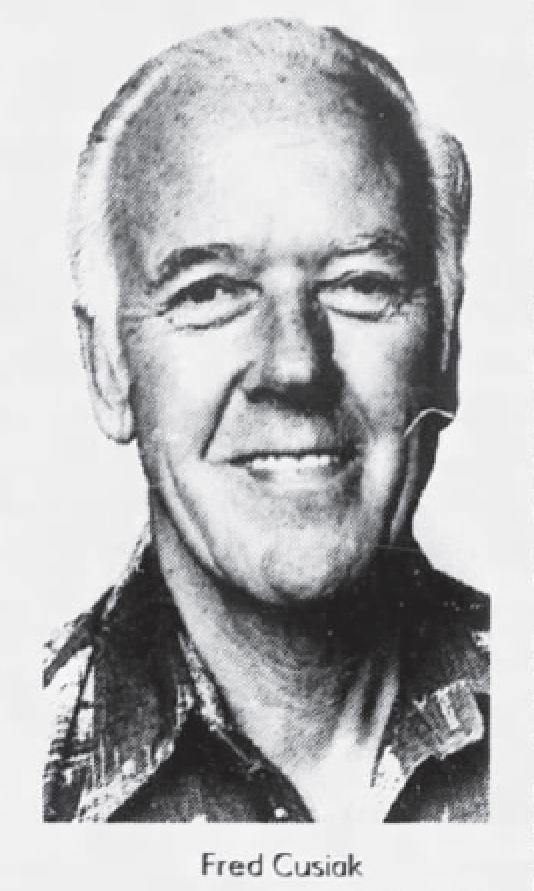While I agree that, in general, the Stone Sour isn’t the most interesting of drinks, it can be delicious: Julie Reiner’s divine New York Sours at Clover Club are actually Stone Sours, although the amount of orange juice is considerably reduced from some of the versions one would see in the 1970s.
But this problem interests me because it appears to offer a point of influence for Tom Bullock, whose book is generally treated as interesting but something of a dead end (its early recipe for a Gimlet aside).
There’s something weird going on with the history of this drink. Its attribution to the South Shore Country Club in Chicago comes from an August 12, 1980 Los Angeles Times article about this guy:
By his account, Fred Cusiak had come to Southern California from Michigan in 1933 and tended bar there ever since, working at a roster of tony places in Palm Springs, LA and Orange County before becoming a widely-popular drinks caterer for private parties, celebrity-hosted and otherwise.
Unfortunately, beyond that article there is literally nothing findable online about Mr. Cusiak–no census, no draft card, no nothing. That is very rare. The timeline he gave of his career checks out (places were open when he said he was there, etc.), but beyond that he is a complete mystery.
Among the places he worked were a couple private clubs: the Somerset House, on La Cienega in Los Angeles, where he would have been around 1940, and the Balboa Yacht Club in Newport Beach, where he was soon after it opened in 1948.
There’s no sign that he worked at the South Shore Country Club itself, but if he came from Michigan that’s certainly in thee neighborhood.
He’s not the only country club link to the Stone Sour, though (besides Bullock, of course): the first place I’ve found it explicitly identified as a sour with added orange juice since Bullock is in a 1973 article from the Tinley Park, Illinois Star. Tinley Park is part of the belt of Chicago’s prosperous western suburbs. In the article, local restaurant manager Bill Doyle gives his recipe for his idea of a “golfer’s delight,” a “Rum Stone Sour.” Doyle, it turns out, had been thee bar manager at the Ridge Country Club, in the same belt of suburbs but somewhat closer to downtown. It was the Rum Stone Sour that first began spreading around in the mid-1970s, although it was rapidly followed by the Vodka Stone Sour, the Apricot Stone Sour (with apricot brandy as the only booze), the (blended) Strawberry Stone Sour, and of course the Amaretto Stone Sour.
So maybe not the most interesting drink, but the idea of a hermetic, private-club school of mixology, with Tom Bullock as one of its bright stars, does rather appeal to me. It doesn’t have to be good mixology–in fact, from my experience of secret private-club drinks, it is usually indifferent at best. But there’s something Pynchonesque in there that I like.
